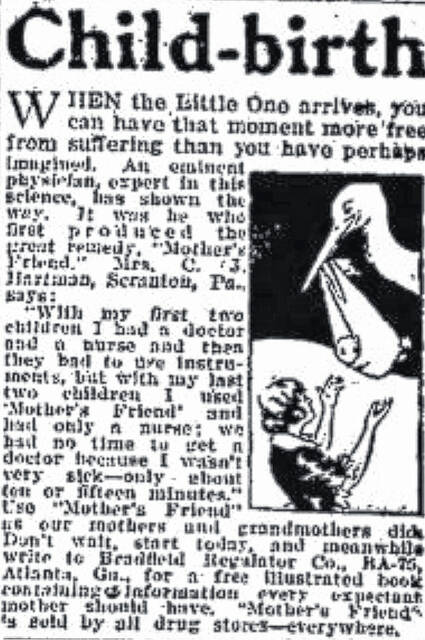THIS WEEK IN HISTORY
ROBESON COUNTY HISTORY
APRIL 14: Back drainage taxes due. The April 14, 1924 Robesonian ran the following letter to the editor. “To the Editor of The Robesonian: I wish to give notice through the columns of your paper that at a recent meeting of the drainage commissioners they found that the law requires that they collect all back drainage taxes by legal process, if not paid otherwise, and the drainage board, therefore, ordered that as to all drainage taxes that are more than one year past due, that foreclosure suits would be immediately. instituted. This will add a considerable expense to the land owners, and Will also require the collection of 20 percent interest…Very truly yours D.B. McNeil, Secretary of the Back Swamp and Jacob Swamp Drainage Com.”
APRIL 13: Robesonian Golf Field Cut To 64 For 2nd Round Action. In the April; 13,1974 Robesonian, the annual golf tournament made headlines. “By BILL NORMENT Robesonian Sports Editor. Robesonian Golf Tournament favorites Cecil Thompson and Mike Hord moved into the second round of match play today after each conquered foes in first round matches last week. The starting field of 125 golfers was trimmed to 64 upon the completion of the first round, and the field will be trimmed further for the semifinals which will begin April 20.”
NORTH CAROLINA HISTORY
APRIL 13: Journey of Reconciliation, 1947 Civil Rights Protest. On April 13, 1947, a mob attacked civil rights protesters at the bus station in Chapel Hill. Earlier that year, the Congress of Racial Equality laid plans to test the enforcement of a Supreme Court decision that declared segregation on interstate buses and trains unconstitutional.
On April 9, eight African American and eight white members of the group set out from Washington, D.C., on Greyhound and Trailways buses in what was billed as the “Journey of Reconciliation.” A few days later, the buses arrived in Chapel Hill where the organizers met with students and townspeople. As the buses prepared to depart on April 13, two blacks refused to move to the rear. Upon leaving the buses, several of the protesters were attacked and arrested.
In May, those who had been arrested went on trial and were sentenced. Organizer Bayard Rustin and two white protesters, charged with interference, surrendered at the courthouse in Hillsborough and were sent to segregated chain gangs. Rustin published journal entries about the experience. His writings, as well as the actions of the “Journey of Reconciliation” riders, in time inspired Rosa Parks’ nonviolent protest in 1955 and the Freedom Riders of 1960-1961.
APRIL 16: Ill-Fated Donner Party Included North Carolinians. A depiction of the Donner Party’s winter camp published a few years after the event. Image from the Bancroft Library at UC Berkeley.
On April 16, 1846, the 87 men, women, and children known as the Donner Party set out from Sangamon County, Illinois, on their ill-fated journey to California.
Already running behind schedule and facing an early winter when they reached the Sierra Nevada Mountains, the group saw its situation made worse by an enormous blizzard with snow as high as 16 feet that trapped them in place for five months. So desperate was their situation that some members resorted to cannibalism. Before the winter was over, 46 of the group had died.
George and Jacob Donner, who led the group, were Rowan County natives. The Donners moved from North Carolina to Kentucky, and then to Indiana and Illinois. George was elected leader of the group, and so the party bore his name.
George’s wife Tamsen Eustis was a well-educated woman from Massachusetts who also had a North Carolina connection. She was an administrator at the Elizabeth City Academy before moving to Illinois and meeting George. Unfortunately, George, Tamsen, and Jacob Donner all perished in the cruel winter of 1846-47. When rescuers did come, Tamsen refused to leave her husband, who was dying from an infected wound. Tamsen’s three daughters and two stepdaughters were all rescued and survived.
APRIL 17: Co-Op Leads the Way to Rural Electrification. On April 17, 1937, the first switch was thrown at the Eason-Tarboro substation, jumpstarting rural electrification efforts in North Carolina.
As part his New Deal, President Franklin D. Roosevelt created the Rural Electrification Administration (REA) in May 1935 with the dual goals of helping rural areas get electricity and providing work to the unemployed. High startup costs and anticipated low returns on investments, made existing electric companies unenthusiastic about entering rural markets, so communities turned to cooperative ventures instead.
North Carolina’s first co-op–the Edgecombe-Martin County Electric Membership Corporation, or EMC-EMC, was formed by residents in the northeastern part of the state. After receiving a $32,000 loan in June 1936, work quickly began to bring electricity to the region. The switch was thrown on April 17 at the Eason-Tarboro substation and electricity began to flow. The plant is still in operation today.
Before the EMC-EMC, North Carolinians had long been interested in rural electrification. The state actually established its own Rural Electrification Authority in April 1935, one month before Roosevelt’s REA. North Carolina’s progressive attitude toward rural electrification helped to make the EMC-EMC more than a flash in the pan.
APRIL 18: Washington’s Tarboro Layover, 1791. Washington’s Southern Tour – President Washington spent the night, April 18, 1791, in the town of Tarboro.
On April 18, 1791, President George Washington arrived in Tarboro. Washington was met at the Tar River by Col. John B. Ashe who escorted him into town. The procession was welcomed by a salute from a single cannon.
While in town, the President was entertained at the home of Major Reading Blount. After a single night’s stay, Washington left Tarboro for Pitt County. In his diary, Washington remarked that the town of “Tarborough” was “more lively and thriving” than Halifax.
Washington’s stay in Tarboro was part of tour of the Southern states that he embarked on in early 1791, after establishing a site for the new “Federal District” along the Potomac River. The tour was part his effort to visit every state during his term of office.
After leaving Virginia and crossing the Roanoke River, Washington’s first stop in the Old North state was Halifax. From there, the President’s carriage tour took him through Tarboro, Greenville, New Bern, Trenton and Wilmington before heading to South Carolina. On his return trip, Washington came back into North Carolina near Charlotte and traveled northward, visiting Salisbury, Salem and Guilford Court House.
NATION AND WORLD HISTORY
April 13, Apollo 13 damaged by explosion. On April 13, 1970, Apollo 13, four-fifths of the way to the moon, was crippled when a tank containing liquid oxygen burst. (The astronauts managed to return safely.)
April 14, Abraham Lincoln is shot. On April 14, 1865, President Abraham Lincoln was shot and mortally wounded by John Wilkes Booth during a performance of “Our American Cousin” at Ford’s Theatre in Washington.
April 15, Titanic sinks; 1,500 dead. On April 15, 1912, the British luxury liner RMS Titanic foundered in the North Atlantic off Newfoundland more than 2 1/2 hours after hitting an iceberg; 1,514 people died, while less than half as many survived.
April 16, Trump dismantles restrictions for coal plant emissions. In 2020, the Trump administration gutted an Obama-era rule that compelled the country’s coal plants to cut back emissions of mercury and other human health hazards.
April 17, Bay of Pigs invasion launched. On April 17, 1961, some 1,500 CIA-trained Cuban exiles launched the disastrous Bay of Pigs invasion of Cuba in an attempt to topple Fidel Castro, whose forces crushed the incursion by the third day.
April 18, The British are coming. On April 18, 1775, Paul Revere began his famous ride from Charlestown to Lexington, Massachusetts, warning colonists that British Regular troops were approaching.
April 19, Revolutionary War begins. Today’s Highlight in History: On April 19, 1775, the American Revolutionary War began with the battles of Lexington and Concord.
Executive Editor David Kennard compiles the History column from Robesonian archives, the North Carolina Department of Natural and Cultural Resources and Associated Press reports.








